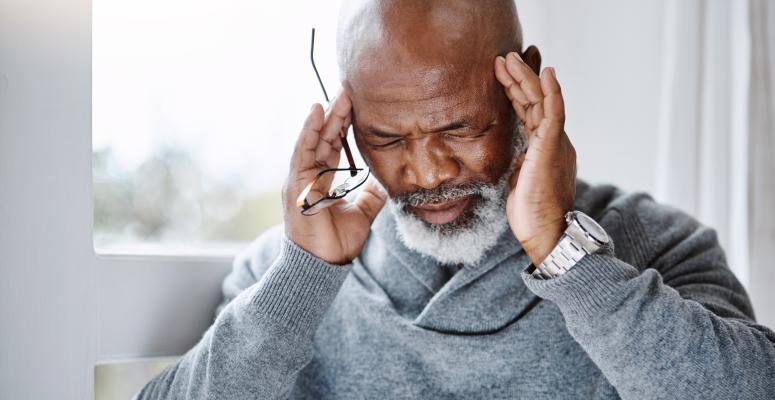
We’ve all felt pain in our lower back from sitting for too long or after exercising. And we’ve also had to deal with headaches from time to time. But is it possible that they are connected? Both types of pain are incredibly common. More than 45 million people in America deal with headaches every year. And 8 out of 10 people have dealt with back pain in their lifetime.
If you’re dealing with a headache at the same time as lower back pain, there may be possible medical concerns to consider.
How are lower back pain and headaches connected?
It may seem like pain at the bottom of your spine and aches in your head are too far apart to be correlated, but that’s not always true. There are several health conditions that can have symptoms of both lower back pain and headaches.
Here are 7 possible reasons that you are experiencing these two symptoms:
- Injuries — Getting hurt from a car accident, falling or playing a sport can result in injuries that can cause back pain and headaches.
- Poor posture — Incorrect posture normally refers to an overextended neck, slumped shoulders and curved spine, which can result in headaches as well as back pain.
- Infections — One of the most common symptoms of the flu is body aches, which can affect both your head and lower back.
- Pregnancy — When you’re pregnant, your body goes through a myriad of changes to properly carry the baby. This results in daily discomforts like headaches and lower back pain. Aches in your back can become more prominent as the baby grows.
- Fibromyalgia — The pain from fibromyalgia can be felt in every part of the body, including the back and head.
- Polycystic kidney disease (PKD) — PKD can cause cysts to appear in or on the kidneys, resulting in possible back and side pain as well as headaches.
- Premenstrual syndrome (PMS) — PMS can have a multitude of symptoms that let the body know that menstruation is on its way. Headaches and back pain are both common PMS symptoms.
While some of these conditions cause headaches and back pain that will go away with time, others may need medical attention. If the symptoms persist or worsen, be sure to reach out to your health care provider.
Physical therapy for headaches
Due to how common headaches are, many people may think that just taking a pain reliever is the only option for alleviating them. But there are quite a few ways that a physical therapist can help you learn how to manage the pain that comes from headaches.
A few PT methods to alleviate headaches are:
- Electrical stimulation — Sending small electrical shocks into your neck and shoulder muscles and nerves with electrical stimulation can help to relieve your headaches, as well as possible stiffness in these areas.
- Posture training — Even if poor posture isn’t the root behind your headaches, learning how to properly hold your body when you sit, walk or lie down can reduce the likelihood of headaches in the future.
- Muscle energy technique — This is a technique that involves a physical therapist positioning your body before you contract a specific muscle or resist one of their movements. This is then followed by a stretch to lengthen the soft tissue, which can relax the tight muscles causing your headaches.
- Manual therapy — This type of therapy involves hands-on techniques by a physical therapist. Manual therapy means that the therapist uses their hands to manipulate the muscle. This can relieve muscle stiffness and compressed nerves, which are often linked to headaches.
Physical therapy for lower back pain
Physical therapy is one of the best ways to alleviate lower back pain. There are quite a few techniques that a physical therapist can use to help relieve the pain in your back, such as:
- Dry needling — The technique of dry needling involves inserting thin hollow needles into the skin as a way to relieve muscle tension.
- Flexibility and strengthening exercises — A physical therapist can guide you through stretches and exercises that can ease the tension in your lower back and allow a greater range of motion for bending, reaching, and twisting your body.
- Manual therapy — Just like pain management for headaches, manual therapy can go a long way for lower back pain relief. It can not only relieve muscle tension in your back, but it can also alleviate back spasms and improve your mobility.
Alliance PTP is ready to help you find top-notch PT for headaches and lower back pain
At Alliance Physical Therapy Partners, we’re proudly bringing together physical therapy practices across the country to help people get the high-quality PT they need.
Want to see a physical therapist in person? We can put you in touch with an Alliance PTP partner that’s close to you and that can help you address headaches and lower back pain.
Not keen on in-person PT sessions or not close to an Alliance PTP partner? No worries. We also offer effective and affordable virtual physical therapy through our Agile Virtual Physical Therapy platform.
Come find help for your injury or chronic condition today!
Get Help at a Location Near You
